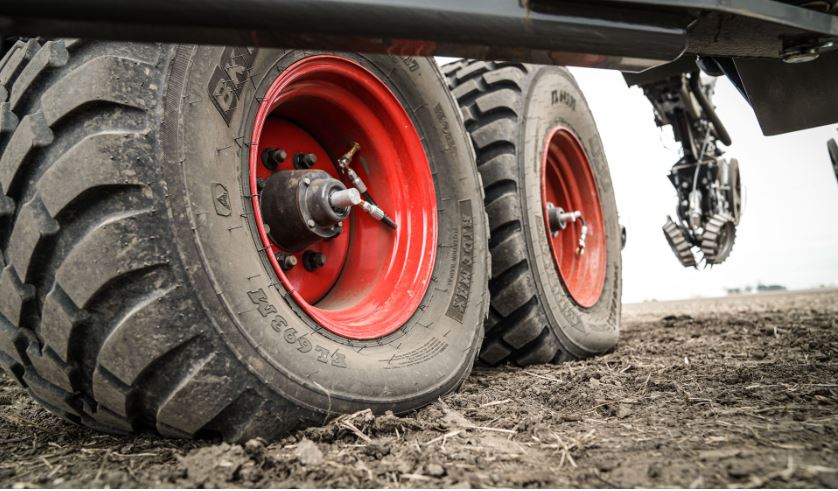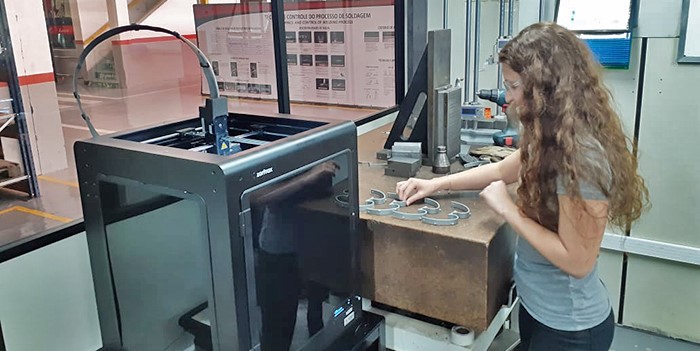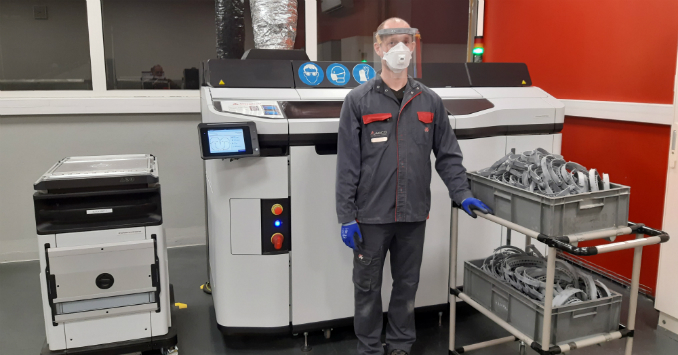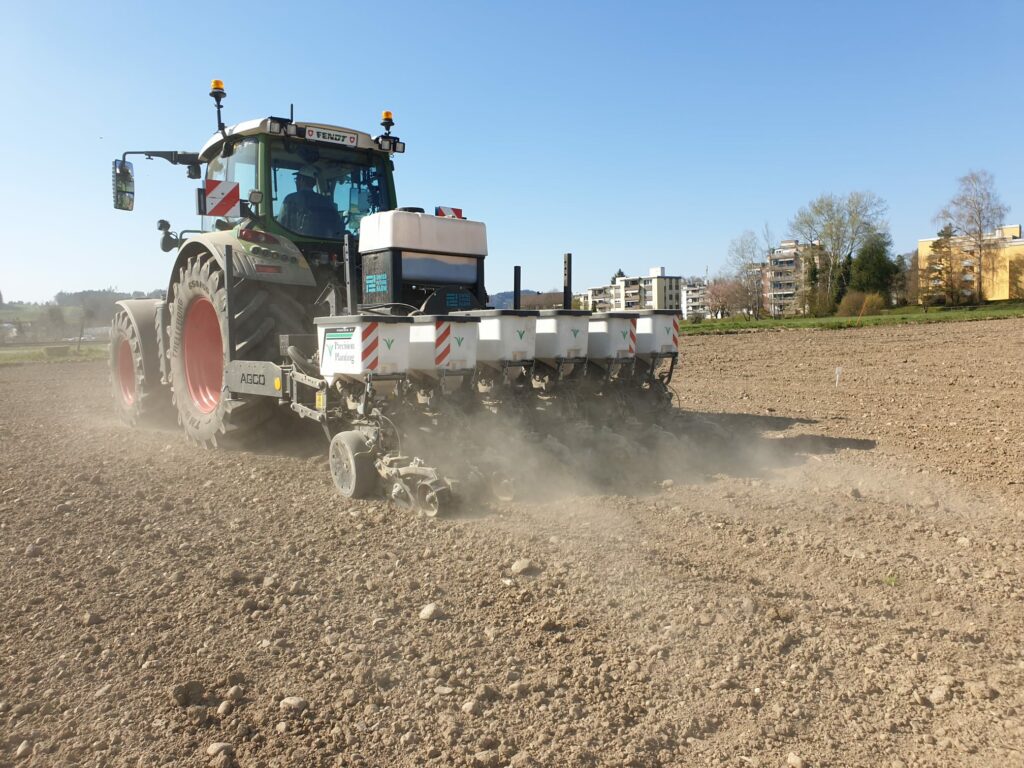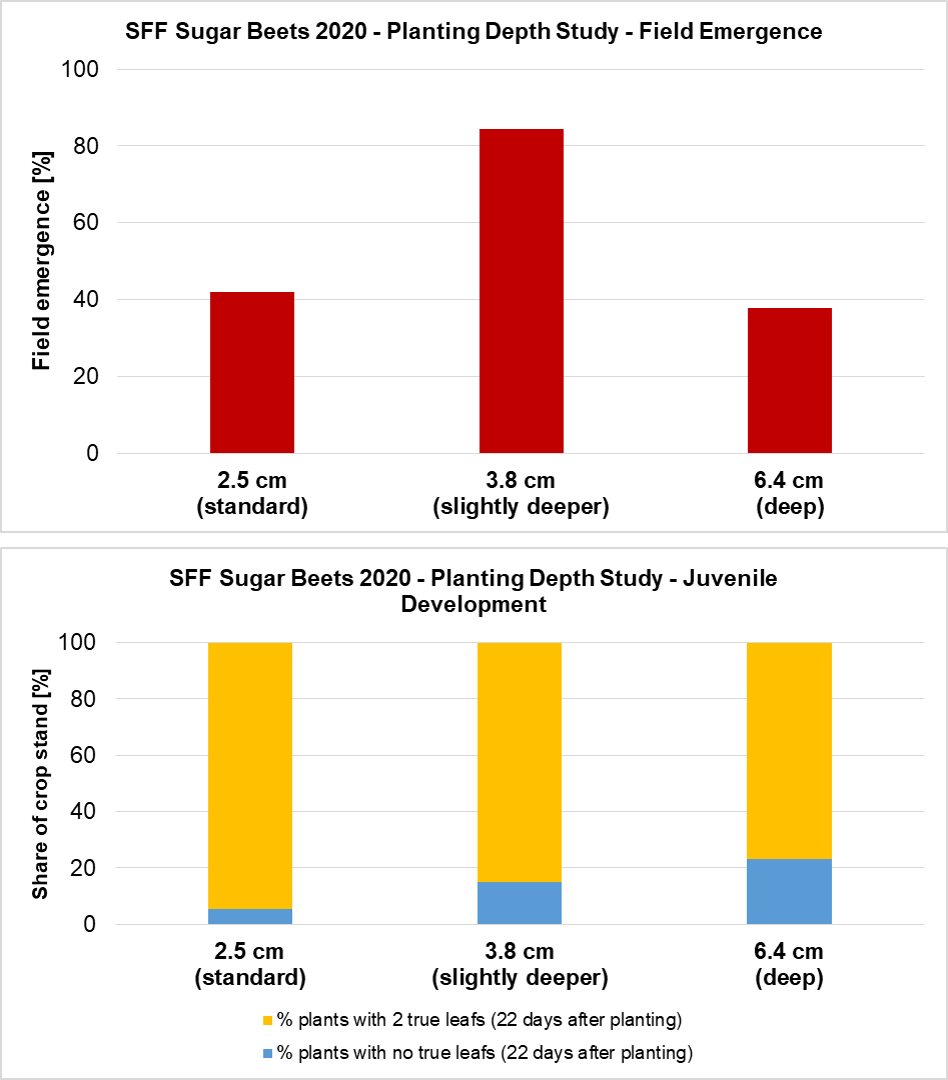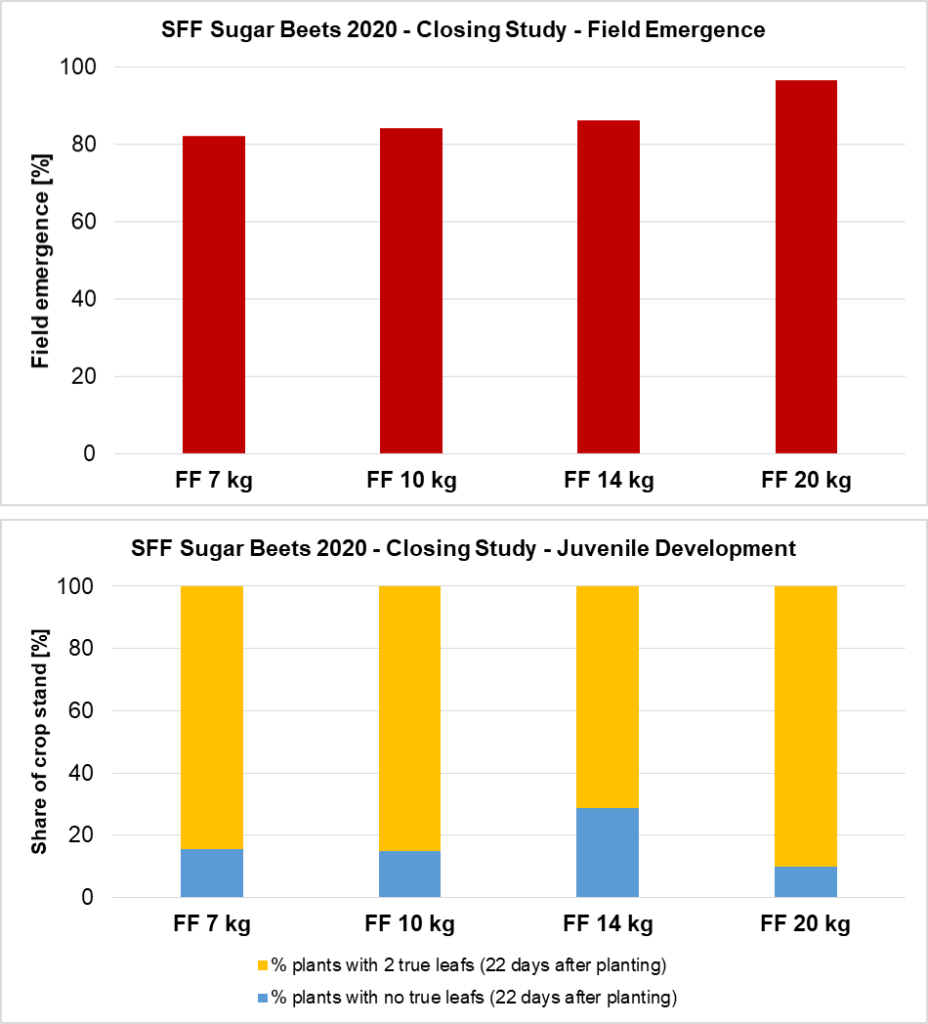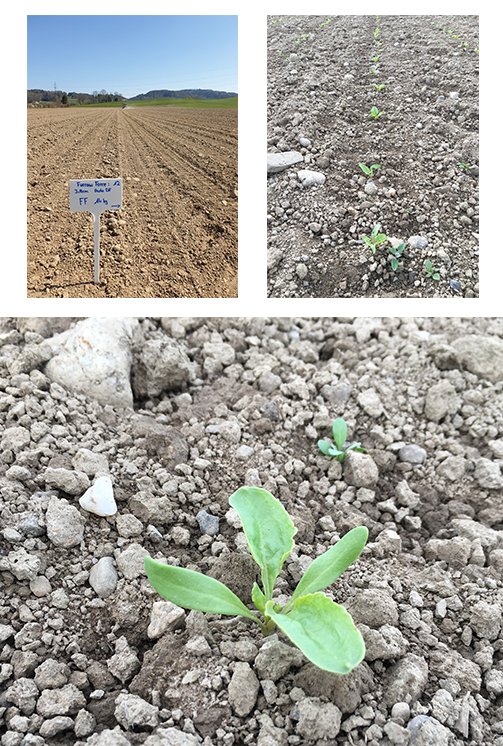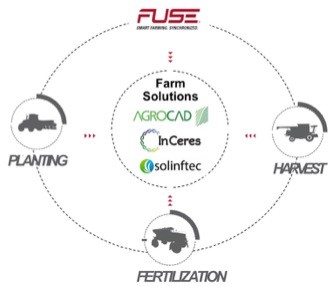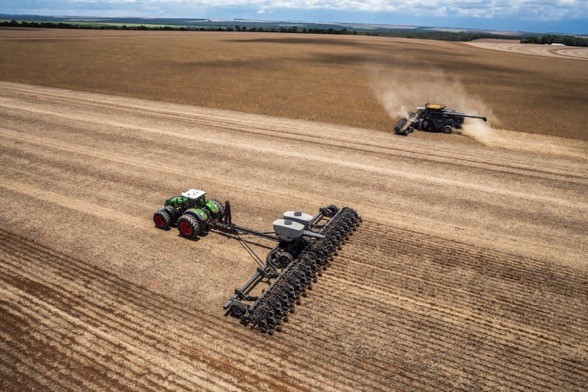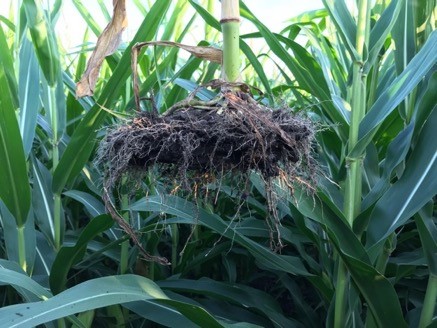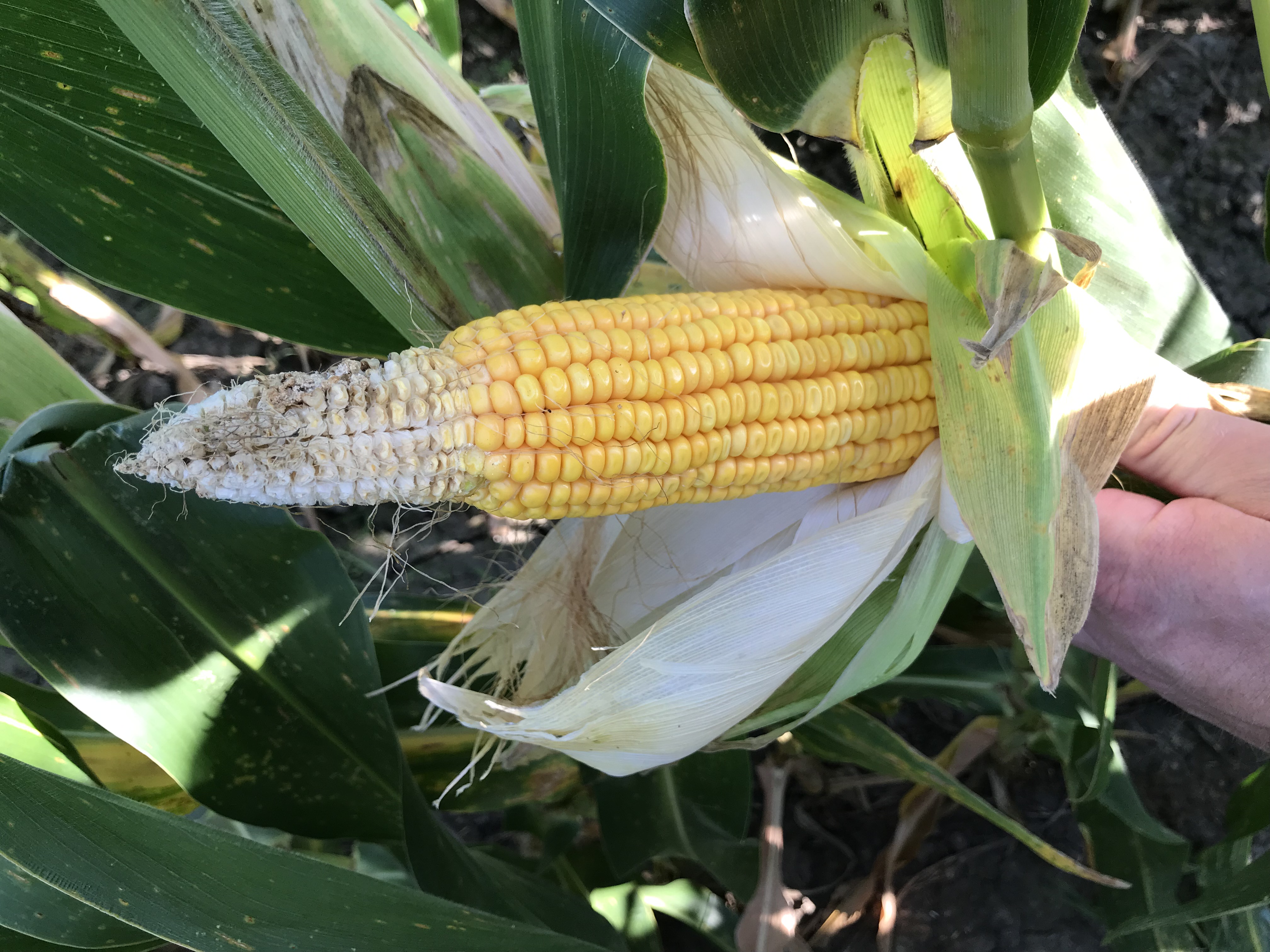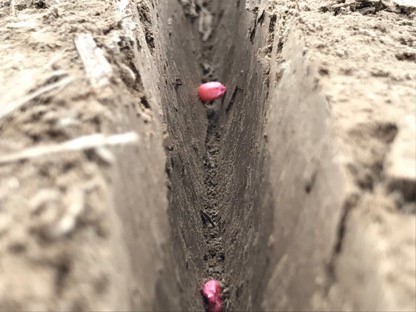Straightforward. Dependable. Connected. Meet the New Massey Ferguson MF 8S Series Tractor Range
Designed for farmers by farmers, following seven years of testing around the globe and extensive customer consultations, the MF 8S Series delivers exactly what operators want. While equipped with superb specifications, at the same time it offers exceptional value for money by ensuring owners will only pay for what they need.
“Our MF NEXT visionary concept, shown for the first time at Agritechnica in 2019, is now a reality,” says Thierry Lhotte, Vice President & Managing Director Massey Ferguson, Europe & Middle East. “Last November we were celebrating the 50th anniversary of the moon landing, which made the impossible become possible. Now it is time to deliver that vision landing on earth. We are not launching just a tractor, but also marking a new era for our brand.”
There are 4 completely new MF 8S Series tractor models all featured by the unique “Protect-U” cab/engine installation and a radical ‘neo-retro’ design. Built on a 3.05m wheelbase they offer maximum power from 205hp to 265hp, all with an extra 20hp from Engine Power Management (EPM).
At the same time, Massey Ferguson introduces new, straightforward numbering. Taking as an example the MF 8S.265 model: the 8 stands for the Series, the S stands for the specification level and the last three digits are the maximum power.
More than just a tractor
The launch of the MF 8S Series heralds a completely new era for Massey Ferguson, introducing an enhanced user experience encompassing the benefits of connectivity and smart farming technologies.
To meet the demand of modern, sustainable farming Massey Ferguson combines state-of-the-art machinery with a comprehensive range of fully connected services to help customers manage their businesses more effectively.
Finance, extended warranty, and courtesy machines can be fully integrated into the package. With MF Connect Telemetry and the new MyMF Customer Portal (depending on countries) users can manage their fleets with MF cloud-based solutions.
“This completely new design delivers the next level of straightforward and dependable tractors that operators asked for,” says Mr. Lhotte. “They told us they need a tractor that is comfortable, with unrivaled visibility, efficient, easy to use, and smart. Massey Ferguson has responded straight to the point with the MF 8S and the associated services.”
Massey Ferguson MF 8S series specifications
|
MF 8S.205 |
MF 8S.225 |
MF 8 S.245 |
MF 8S.265 |
| Engine |
AGCO Power – Stage V – All-in-One technology |
| Engine capacity |
6-cylinder, 7.4 liter |
| Transmissions |
New Dyna E-Power Dual Clutch or Dyna-7 Semi-Powershift |
| Max. power @ 1,850rpm |
205hp |
225hp |
245hp |
265hp |
| Max. power EPM |
225hp |
245hp |
265hp |
285hp |
Max torque @
1,000 ÷ 1,500rpm |
900Nm |
1,000Nm |
1,100Nm |
1,200Nm |
MF 8S Series – Introducing a new era
- A completely new 3.4m³ volume cab. With its unique shape and the four-pillar structure, this cab has unrivaled visibility. It offers the next level of space, comfort, controls, and connectivity.
- Thanks to the unique “Protect-U” design it reduces noise, heat, vibrations and enables clean and cool airflow to be aspired by the rear and delivered to the engine air filter. This cab is positioned as one of the best in the marketplace in terms of noise levels.
- Optimum control and smart farming capability are provided by the “MF vDisplay” digital and intuitive dashboard, Datatronic 5 terminal, and a new comprehensive MultiPad control lever with “Control Centre” armrest.
- The MF 8S Series introduces a choice of two completely new and efficient transmissions, delivering maximum power to the ground while reducing power losses by 26% and improving fuel economy by up to 10%.
- The new Dyna E-Power dual-clutch transmission combines the benefits of today’s available technologies: the feeling of a CVT and the efficiency of a directly mechanically-driven transmission. Alternatively, the new, super-efficient, Dyna-7 Semi-Powershift now offers 28 forward and reverse speeds.
- A new, rear axle combined with more oil flow improves efficiency and versatility. With up to 10% more traction power and 20% more flow, it enables the use of wider, more productive implements and machines to improve performance and reduce costs.
- Complete connectivity offering to improve profitability and sustainable farming. MF 8S comes standard with MF Connect Telemetry and optional MF Task Doc data transfer software allowing users to make management decisions to maximize efficiency and productivity.
- Choice of Exclusive or Efficient specification packages and options enable users to tailor their tractors to suit at best their specific needs.
- *MF Always Running courtesy tractor fleet service, included as standard, offers industry-leading service to maximize uptime.*in participating markets
High comfort cab – combining comfort, visibility, and connectivity
With its 24 cm. gap separating the cab from the engine, the “Protect-U” concept completely insulates the cab from noise, heat, and vibrations. Noise levels of just 68dB make it one of the quietest in the market and, with an interior volume of 3.4m³, it is also one of the most spacious.
With a 6.6m² glass area, it is a light and airy workplace boasting unrivaled space and visibility. Replacing the dashboard with the new digital “MF vDisplay” terminal fitted to the right pillar, leaves just the steering wheel and Power Control lever in front of the driver, providing exceptional forward visibility over the slim, super wasp-waisted bonnet.
Inside the cab, operators will feel the exclusive environment, with real leather on the seat (optional), a leatherette finish on the steering wheel and trim (optional). The new high-quality seat is auto-air suspended, heated, ventilated, and equipped with lateral damping. There is, of course, an efficient automatic air-con, which is supplied through 14 outlets. Mechanical active cab suspension further enhances comfort on Exclusive models.
The “MF vDisplay” digital dashboard shows all the tractor information at a glance. Easy to read and with intuitive operation, its clear display can be personalized and changed by simply scrolling through settings with a rotary knob by the steering wheel.
The new Control Centre armrest fitted with the latest easy-to-use MultiPad lever provides complete fingertip control. This ISOBUS compatible lever operates all the tractor functions and includes an integral micro-joystick to control two spool valves.
The updated Datatronic 5 (new “glossy” front glass and user interface) is mounted on an adjustable arm. This 9-inch touch-screen terminal is as easy and intuitive to use as any mobile phone or tablet. It is a single screen system for controlling the tractor functions and manage all MF Technologies such as MF Guide, MF Section, and Rate Control as well as MF Task Doc data capture and transfer.
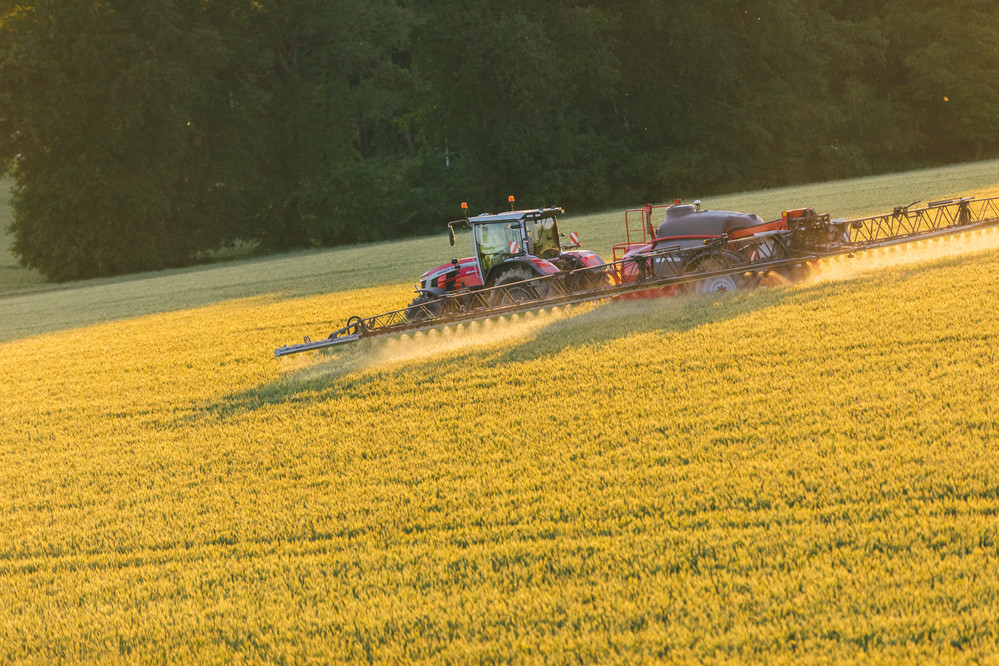
High performance and efficiency
Latest Stage V AGCO Power 6-cylinder / 7.4-liter engines deliver more power, torque, and performance at low rpm reducing operating costs. Massey Ferguson’s straightforward All-In-One after-treatment technology along with hydraulic tappet adjustment, which is both maintenance-free, helps reduce running costs.
These robust engines develop 205hp to 265hp, with Engine Power Management (EPM) providing an extra 20hp for transport, PTO, and hydraulic applications. Maximum power is generated already at 1,000 rpm and it is constant up to 1,500 rpm – providing high performance at low engine speeds that cuts fuel consumption by 10% and noise by up to 6dB.
All-In-One integrated Selected Catalytic Reduction (SCR) with a Soot Catalyst (SC) is a fully integrated system that does not require the use of a Diesel Particulate Filter (DPF) or complex Variable Geometry Turbocharger. Designed to last the lifetime of the tractor, this compact unit, mounted outside the tractor, ensures visibility remains completely unimpeded and the exhaust pipe is even slimmer than before.
Unique encapsulated engine
The distinctive “Protec-U” design with its 24 cm. gap between the cab and the engine installation sets the MF 8S Series apart from all other tractors. As well as reducing heat, noise, and vibrations being transmitted to the cab, the unique encapsulated engine position improves cooling and performance.
Air drawn in from the middle of the tractor, behind the engine, is cleaner than that from the standard position. This clean air helps reduce the load on the main air filter while optimizing engine performance.
This innovative design greatly improves accessibility for cleaning the radiators too. Making it easier to carry out regular maintenance will improve reliability and help reduce downtime.
New highly efficient, easy to use transmissions
With the launch of the MF 8S Series, Massey Ferguson is introducing the next level of highly efficient transmission technology.
Designed and developed by its in-house experts, the Dyna E-Power, Dual Clutch gearbox combines the advantages of a continuously variable transmission (CVT) with the ability to transmit power as efficiently as a mechanical transmission. This new unit even further reduces power losses versus previous MF 7700 S Dyna-6, by up to 26% at higher speeds, delivering fuel savings up to 10%!
Dyna E-Power provides more than a full powershift, using Dual Clutch technology for ranges shift allowing anticipation and seamless changes. It offers four ranges with seven gears, with semi-overlaps ideally designed for maximizing in the field and on-road performance.
Operating fully automatically or manually using buttons on the MultiPad or Power Control lever, it is also possible to adjust how aggressively and quickly fully automatic changes are made to match work and conditions.
Gears change seamlessly, smoothly, and efficiently, with only a 9% gear ratio difference between each speed in fieldwork applications from 5km/hr to 20km/hr.
To further improve fuel efficiency, cut noise and improve comfort, top speeds are achieved at very low engine rpm. 50km/hr (where permitted) are reached at 1,500rpm, while 40km/hr just need 1,200rpm.
Alternatively, users can choose the new Dyna-7, semi powershift gearbox, which is the latest development of the renowned and reliable Dyna-6, with the same straightforward operation. This provides not only one extra powershift gear and smoother shifting, but it is also 10% more efficient than the Dyna-6 for the same engine horsepower in-field application.
Dyna-7 offers the easy and efficient operation of a total of 28 forward and reverse speeds in four ranges and seven seamless gears. This cost-effective transmission delivers smooth and intuitive operation in manual mode or can even be operated fully automatically.
For those requiring the comfort and control from a continuously variable transmission (CVT) the MF Dyna-VT will be available for the MF 8S Series in the future.
High performance and efficiency
Massey Ferguson MF 8S Series tractors are built on a 3.05m wheelbase that provides stability and improves traction when working with wide, demanding implements, offering up to nearly 10% more traction power.
Power is efficiently transferred to the ground through a new, immensely strong rear axle, with a choice of flanged, short, or long bar axles, to suit all operations.
New wheel specifications now include the ability to fit up to 2.05m diameter rear tires, including the brand-new option of VF650/75 R42 Trelleborg TM1000 PT.
The tractors retain the well-proven standard suspended front axle. Offering a tight, 5.7m turning radius. Now equipped with suspension lock, it also equipped with brakes for tractors fitted with all 50km/hr transmissions.
Three-point linkage capacity is increased by 7% to 10,000kg and, with powerful new hydraulics, these tractors handle and operate large, wider implements. A 150 liter/min closed-center, the load-sensing hydraulic system is standard, providing 36% more flow compared with the previous system. A 205 liter/min flow is an option, which can also be supplied as an ECO version, generating the flow at 1,650rpm (230l/min at max at rated engine speed). Up to five electronic rear spool valves can be specified.
All models come with a four-speed PTO as standard, providing a choice of 540, 540ECO, 1,000, or 1,000ECO, which means operators can always select the right speed for power or economy.
A new 4,800kg capacity front linkage option, fully integrated into the tractor, comes with the option of an ISOBUS socket.
100% Connected
Connectivity is the standard on the MF 8S Series, which comes with MF Connect Telemetry including a three-year subscription license. This uses mobile data to transfer information to the MF Connect Cloud, providing easy access to useful management information on machines.
As well as logging the machine’s position and data it can also send error messages and upcoming service requirement alerts to users and dealers (with permission).
This is fully integrated into the ‘MyMF’ customer portal where users can view and manage the information and data in real-time, remotely from any internet-enabled device. (MyMF will be available soon in the UK, Ireland, France, and Germany and will follow later in other countries).
All MF 8S Series tractors can also be equipped with a full range of Sustainable Farming Technologies.
Heart of the system is the intuitive Datatronic 5, touch-screen terminal, this does not only manage the tractor functions, but it allows complete control of all ISOBUS compatible implements.
A new antenna rail, positioned at the front of the cab, enables easy mounting of a choice of GPS receivers up to RTK precision. For security and risk avoidance, the antenna is locked in place with a key as standard.
An optional Fieldstar 5 terminal can be used to manage all the MF Technologies– including MF Guide, while MF Section and Rate Control can now handle up to 36 sections and five products. It now also records the field boundaries and provides automatic field detection.
MF Task Doc and Task Doc Pro automatically record and wirelessly transfer the gathered information and data. This is a fast, easy, and secure way to create accurate documentation to help operators comply with regulations and store useful information.
MF Task Doc Pro will also create application plans and fully synchronizes with farm management software. With NEXT Machine Management data can be simply and securely transferred wirelessly via the Agrirouter Cloud.
Best by design
The new MF 8S Series combines radical designs with a practical purpose. The striking ‘neo-retro’ design pays tribute to the brand’s heritage, illustrated by a new interpretation of the iconic MF grey saber stripe on the side and horse head collar motif on the bonnet, which dates back to the MF 100 series.
Superb specifications
MF 8S Series Exclusive specification models are available from now. These powerful offerings will be expanded with the introduction of the Efficient versions in early 2021, along with the Dyna-VT (CVT) transmission option for all models later in 2021.
The Exclusive specification is a comprehensive package providing operators with exceptional comfort and ease of use as well as genuine performance-enhancing features to increase productivity and efficiency.
As well as a choice of the Dyna-E Power or Dyna-7 transmission, Exclusive models come equipped to a high specification, including MultiPad control lever, five electric spool valves with fingertip switches and joystick. It is MF Guide ready, with MF Task Doc recording and, in common with all MF 8S Series, it includes MF Connect telemetry with a three-year subscription.
MF Always Running offers industry-leading dependability since 2019
All owners of MF 8S tractors will benefit from the peace of mind that comes with the MF Always Running courtesy tractor fleet service, which is included as standard. This unique service provides a temporary replacement of the same power and specification.





